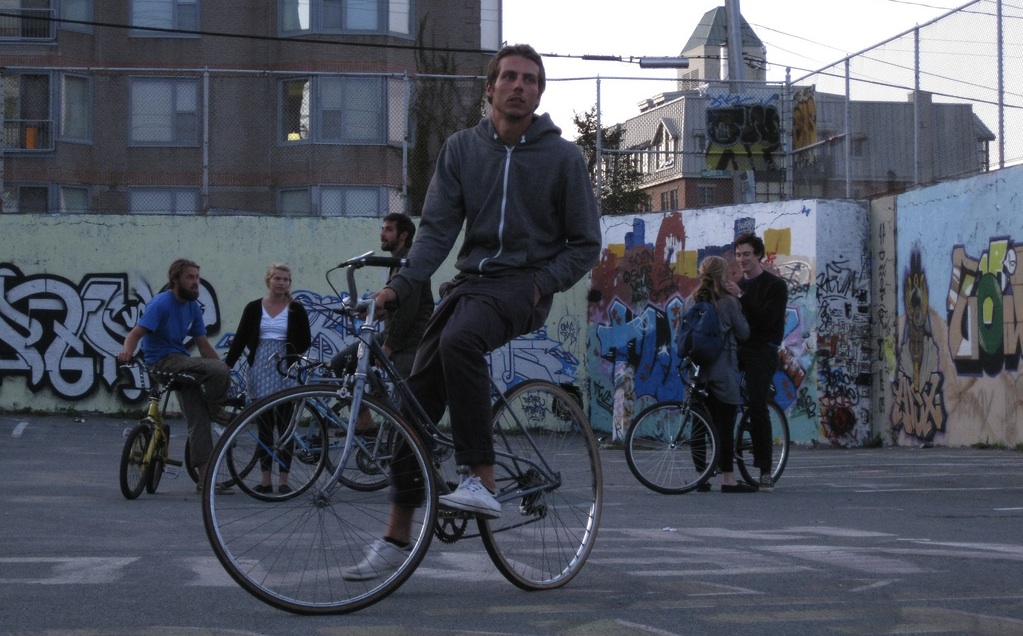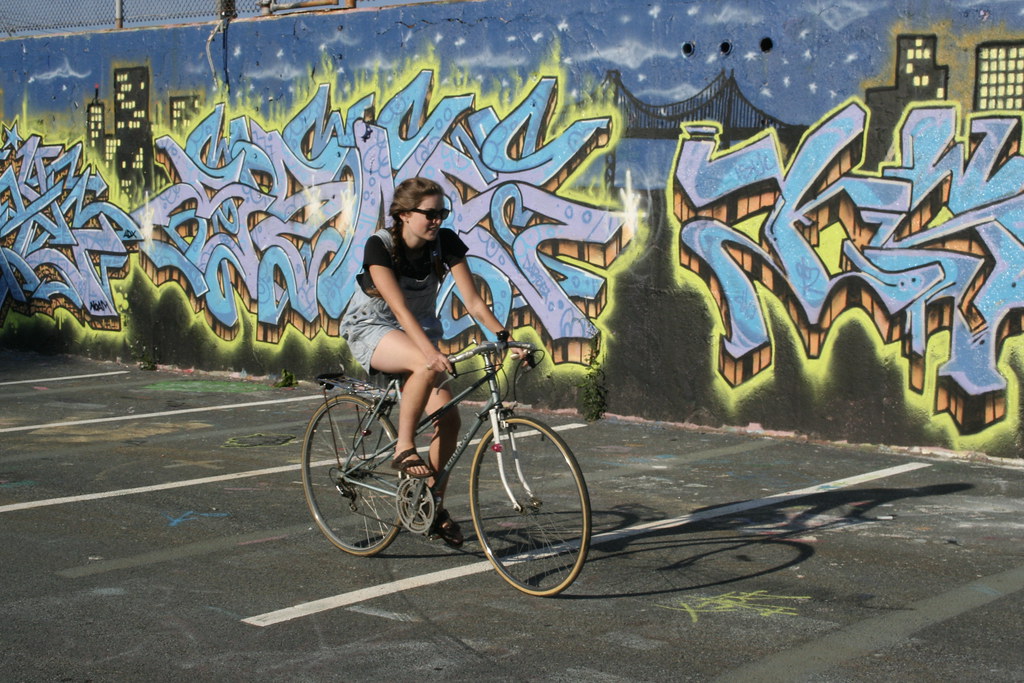HALIFAX – For nearly a decade, the parking lot at Lower Water and Morris streets has been the headquarters of one the city’s most unique and unregulated cultural spaces. During the weekday, permit holders park their cars in the sunken pit. In its off-hours, it has hosted a multitude of unsanctioned activities. On the weekend, a regular crowd plays street hockey, and at night, car enthusiasts gather there to compare engines. The green space that surrounds the parking lot serves as an unofficial park; a place for people to hang out and for the homeless to sleep. It has been the backdrop for countless music videos and photo shoots, and a battling ground for freestylers. The most evident feature of this unique pseudo-public space is the wall that encapsulates the parking lot that operates as a dynamic open-air gallery for graffiti artists.

Up until very recently, the pit was considered a legal wall (or ‘free wall’) — the only place in the city where graffiti artists could freely practice their skills without fearing arrest. Since September, this freedom has been revoked. Without any formal communication to the artist community or surrounding neighbours, police began to crack down on graffiti activity in the pit, telling artists they were unwelcome and that what they were doing was illegal.
What gives? What changed?

Well… lots. The Victoria Apartments, a well-known building that has housed artists and musicians for decades on the corner of Hollis and Morris streets is on the verge of demolition, and the city will soon see a 10 storey condo in its place. Nova Scotia Power — the owner of the pit — is currently in the process of converting the former Electropolis into a modern facility that will house their corporate offices right across the street. CanPark Services Ltd. has been managing the parking lot for years, but as of December 19th 2009, NSP is taking it back.

According to David Rodenhiser, spokesperson for NSP, the pit will be filled in to a level grade with Lower Water Street. The materials used to fill in the pit will be “recycled materials and concrete masonry from the demolition of the Lower Water project.” There has been no decision made about what the leveled-off lot will eventually be used for, but reconverting its usage for parking still remains a possibility.
Nova Scotia Power attributes their decision to level off the lot to their commitment to being good neighbours. According to Rodenhiser, there has been a growing number of noise complaints about the car enthusiasts who gather in the pit at night, and an alarming rate of drinking and drug use that has gotten out of hand. Noticeably, graffiti is not one of the activities cited as a reason NSP has decided to level off the pit.

Two weeks ago, city countil accepted the Graffiti Management Plan, a thorough report about HRM’s current policies and approaches regarding graffiti, as presented by the Graffiti Task Force. On page 4 of the plan, HRM reports that “[g]raffiti leads to social decline including alcohol, drugs, litter, broken glass.” Sweeping statements like these risk nullifying the legitimacy of these reports. The correlation between the participation and/or appreciation of graffiti culture and with other types criminal activity is often referenced in the report and frequently printed in the media.

Also included in the report was the emphatic notion that free walls do not work. Basing their findings on best practices learned from a trip to New York City in 2007, legal walls are now correlated with a negative spillover effect in the areas where they are located. Linda Mosher and her task force assert that graffiti ‘vandals’ will tag their way to and from the site of legals walls, leaving the surrounding neighbour endangered. The Graffiti Management Plan cites experiences at the B.C. Silver School in Spryfield, but fails to make mention of the pit.
If you have a chance, take a walk around the Lower Water and Morris area. Keep your eyes peeled for signs of graffiti that have “spilled over” into the neighborhood. While you many not find very many tags, you will find several graffiti-inspired murals, a stone’s throw from the pit. There’s Bearly’s on Barrington. The jazz-inspired piece of the side of 1313 Hollis. And another outside of O’Brien’s Hall. That’s just a walk around the block.
Council wants to designate all of HRM a zero-tolerance graffiti zone, but understands the importance of supporting other types (read: organized) of public art. The Community Mural Project has been a tremendous success. Murals like these can help deter vandalism while simultaneously beautifying their surroundings. Another notable project is the painting of 31 traffic control boxes around the HRM. These are commendable projects that should continue to be supported.
Meanwhile, a pseudo-public space in the South End of Halifax is facing an extreme makeover. The changes will affect more than just the permit holders who park their cars there during the week. The ripple effects will be felt far beyond the collective psyche of the artist community. When the pit eventually becomes cordoned off to the public, Halifax will be left with one less space for its citizens, of various social backgrounds and classes, to overlap and intersect.
How do Halifax’s policies on graffiti compare with those of other Canadian cities? How do you feel about the leveling of the pit? Share your thoughts with Spacing Atlantic.

photographs by Katie McKay




9 comments
Great article, great photos. Tragic evidence of the homogenizing of our great city.
maybe i missed this in the article (by the way, great article), but what exactly are they going to do with the pit once it is buried in?
the pit will be missed for the positive (albeit modest) exposure it gave to halifax writers in town and across the country, who will find places to paint whether they are legal or not.
There hasn’t been a decision made about what they’ll do with the site once it’s filled in. It will definitely be a hot piece of property (close to the waterfront, Bishop’s Landing, the new Farmer’s Market, downtown…), and my guess is that they’ll sell it off to a developer.
Also, I failed to mention the ongoing discussion about the possible relocation of Charles Morris’ house (1273 Hollis Street). Here is a quote from Geoff Davies’ Chronicle Herald article from December 9th (http://thechronicleherald.ca/Metro/1156709.html):
“If negotiations with Nova Scotia Power are successful, the building would be moved to the utility’s neighbouring property at the corner of Lower Water and Morris streets.
Nova Scotia Power spokesman David Rodenhiser said the company is looking at providing space next to the sunken parking lot on the property.”
Only time will tell how this situation will unfold…
It’s interesting how a semingly mundane move (or lack of) to leave a giant crater sitting for years in the midst of city centre has generated so much attention. I’m not clear as to how it happened ― did the city write in policy to let writers write? or did NSP turn a blind eye?
Regardless, one has to admire the anomaly for its total disregard for the 4th law of thermodynamics: MONEY. This spot, as you’ve mentioned Katie, is near-waterfront-urban real estate. In terms of NSP’s interest, I can certainly see how they’d like to take it over and develop/let someone develop it.
HOWEVER,
It soooo doesn’t make any sense that they’d want to level it off first because of the following: unless you’re building’s on stilts, you gotta dig for some legs!
I’ll turn your attention to the construction site adjacent to the old curry village on southpark street, with its 5 or six storey hole, albeit for a projected 23 or so above ground.
While I don’t see a tower in the works, I also don’t know why it would pay off for the land to be leveled only to be dug up again, if it was to be developed.
My best guess is NSP wants either a bigger parking lot for employees of its new digs across the street, or wants to shed liability incurred with letting people use the pit, or both.
Don’t hold your breath for much more than more tarmack. For a while.
QUALITY I really like this blog, now im not 1 for adding links in my replies but I feel this is a great exception, I read a blog like this on http://www.graffiti-art-murals.co.uk by a graffiti artist called Banksy & another great bunch of graffiti artists called the Graffiti Kings.
Look, I know this is just going to come off as a rude comment, and I’m sorry, I just want to stress a point! I think this is stupid! The city needs to understand one thing! By getting rid of the legal wall, they’re just going to cause the city more money! Graffiti cleans up will rise by an EASY 50-80% and I know this because I myself am one of the legal writers that uses this wall! So unless they are prepared to render another wall for use, I wish them luck!
Nice article… This definitely upsets me a little, the pit has always been an interesting place to go but at least I have been able to enjoy it for awhile before this. All good things must come to an end, I guess.
“Appreciation of graffiti culture has been linked to cycling without a helmet”… I like how you slipped that bit of sarcasm in there too, haha
I really liked your article – Growing a city is a delicate process and it is important to keep places such as this around.
very well written article.
very sad to see that local artists are losing there spot.
Is there anywhere we can paint that is legal or at least tolerated in halifax???